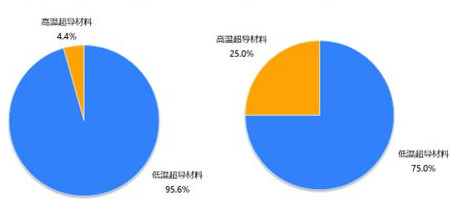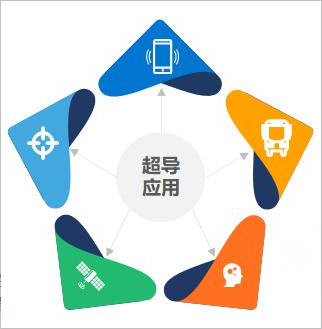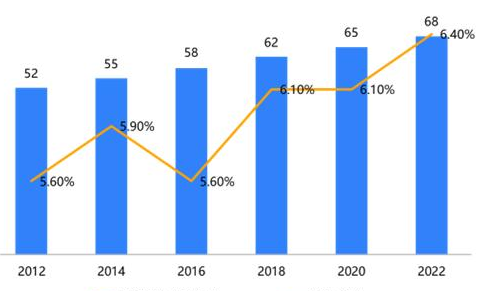2023 China New Materials Superconducting Materials Industry Insight Report of 36 Krypton Research Institute
In the science fiction film "Avatar", the magical room temperature superconducting
ore "Unobtanium" uses a powerful magnetic field near the mother tree to suspend Mount
Hallelujah. In reality, research on room temperature superconductivity is also suspected of
achieving a disruptive breakthrough. Recently, physicist Ranga Dias and his team announced
that they have developed a material that exhibits superconductivity at room temperature
and relatively low pressure conditions: a ternary compound composed of lutetium nitrogen
hydrogen (Lu-N-H). Whether room temperature superconductivity can spark a new round of
energy revolution remains to be verified, but the release of this research achievement once
again ushers in a high light era for superconducting materials.
Superconductivity, also known as superconductivity, refers to the phenomenon where
the resistance is equal to zero under certain conditions and the current can flow losslessly
between them. Materials with this characteristic are called superconducting materials or
superconductors. Superconducting materials possess zero resistance, complete diamagnetism,
and quantum tunneling effects that conventional materials do not possess. They have unique
application advantages in many fields such as medical equipment, energy, transportation,
large science engineering (CFETR, heavy ion accelerators), and national defense.

From the perspective of the implementation path of superconducting materials, the
current global technological directions include ultra-high temperature and ultra-high pressure.
The "room temperature superconductivity" technology has achieved superconductivity under
laboratory conditions at a pressure of 20 ℃ and 10000 standard atmospheres. However, it is
difficult to create a pressure environment of 10000 atmospheres on a large scale. Therefore,
at this stage, using ultra-low temperature is the only means to commercialize superconductivity.
Superconductors with a critical temperature below the liquid helium temperature range are
called low-temperature superconducting materials, and vice versa, high-temperature
superconducting materials.
1. Development of environment
Relevant national departments have successively introduced favorable policies, ushering in
new opportunities for the development of superconducting materials in China
As early as 2006, superconducting materials were included in the "Superconducting
Materials and Technology Special Project" of the national "863" plan, and comprehensive
research and development were carried out in areas such as power applications, strong
magnet applications, and weak current applications. In recent years, national policies have
been intensively implemented around the top-level design of superconducting materials,
encouraging and regulating the healthy and orderly development of the industry. Made in
China 2025 lists superconducting materials as one of the key development projects in
cutting-edge disruptive new materials. The 13th Five Year Plan for the Development of National
Strategic Emerging Industries proposes to actively develop new superconducting materials,
participate in the international thermonuclear fusion experimental reactor plan, continuously
improve national major scientific and technological infrastructure such as fully superconducting
Tokamak fusion experimental devices, and promote the development and innovation of
superconducting materials; The Ministry of Industry and Information Technology, the National
Development and Reform Commission, the Ministry of Science and Technology, and the Ministry
of Finance jointly issued the "Guidelines for the Development of the New Materials Industry",
proposing to strengthen basic research and engineering technology research on superconducting
materials, achieve industrial applications in fields such as power transmission and medical devices,
and clarify the key development direction and incremental market sources of superconducting
materials in China; In December 2021, the Ministry of Industry and Information Technology, the
Ministry of Science and Technology, and the Ministry of Natural Resources jointly released the
"14th Five Year Plan for the Development of Raw Materials Industry" as a guiding document,
proposing forward layout actions for the development of superconducting materials, strengthening
support and guidance in application fields, and clarifying the positioning of superconducting
materials in modern industries.
China's basic research capacity for superconducting materials continues to break through,
but there is still a gap between large-scale preparation and international level
With the continuous support of national key research and development plans, China
has made breakthroughs in key technologies in various aspects of superconducting materials.
On the one hand, China is at an international advanced level in basic research on
superconducting materials, setting a world record for the critical current density of
low-temperature superconducting materials, and being the first to discover YBCO
high-temperature superconducting materials and new iron-based superconducting materials,
leading the development direction of international superconducting materials; On the other
hand, as high-temperature superconducting materials begin to enter the commercialization
stage, China's technology in some high-temperature superconducting application layers is
approaching or reaching international advanced levels. For example, the world's first 35 kV
kilometer level superconducting cable has been put into operation in Shanghai, completing
the task of supplying superconducting wires for the International Thermonuclear Fusion
Reactor (ITER) program, industrialization of high-performance YBCO coated conductors,
hanging of high-voltage superconducting current limiters, implementation and application of
accelerators for cancer treatment, and dual use of superconducting weak current technology
for military and civilian purposes. At the same time, due to the relatively lagging development
of the industrial chain and insufficient integration of industry, academia, research and application,
there is still a gap between the overall level of research and development of superconducting
materials and technology in China and the international level, such as the large-scale preparation
of practical superconducting materials and superconducting application layer technology in
high-end medical equipment, analytical instruments, scientific research equipment, and other fields.
2. Development status
Industrial chain structure
The upstream raw materials of the industrial chain are composed of metal elements such as
niobium, titanium, yttrium, barium, bismuth, strontium, boron, etc. The midstream mainly includes
two types of low-temperature superconducting materials (NbTi, Nb3Sn) and four types of
high-temperature superconducting materials (bismuth series, yttrium series, MgB2, iron-based
superconducting materials), which are the core links of the industrial chain and provide an application
foundation for downstream power transmission, medical devices, electronic communication,
national defense and military, scientific research, and other scenarios.
(1) Upstream: The upstream of the industrial chain consists of raw materials, with titanium, niobium,
and tin as the main low-temperature superconducting raw materials, and yttrium, barium, bismuth,
strontium, and boron as the main high-temperature superconducting raw materials.
(2) Mid stream: Superconducting materials can be divided into low-temperature superconducting
materials and high-temperature superconducting materials according to critical temperatures.
Currently, low-temperature superconducting materials and their applications account for over 90%
of the total superconducting market in China, and high-temperature superconducting materials are
still in the early stages of industrialization. The commercialized low-temperature superconducting
wires are mainly NbTi and Nb3Sn superconducting wires. Among them, NbTi has good processing
plasticity and is mainly used in fields such as MRI, MCZ, NMR, nuclear fusion experimental reactors,
accelerators, etc; Nb3Sn is a brittle material mainly used in fields such as NMR and nuclear fusion
experimental reactors. High temperature superconducting materials with practical value mainly
include bismuth based (BSCCO), yttrium based (YBCO), magnesium diboride (MgB2) superconducting
materials, and iron based superconducting materials. There are three preparation methods: solid
phase method, liquid phase method, and gas phase method. High temperature superconducting
materials have two major advantages: low usage cost and few application restrictions. At present,
they have achieved preliminary applications in fields such as induction heating and power transmission.
The feasibility of their application in the field of controllable nuclear fusion has been confirmed, and
they are expected to replace low-temperature superconducting materials in more fields in the future.

(3) Downstream: The zero resistance, complete diamagnetism, and quantum tunneling effects of
superconducting materials distinguish them from ordinary materials and are widely used in various
fields such as power transmission, medical devices, electronic communication, national defense
and military, and scientific research. For example, based on the zero resistance property and
complete diamagnetism of superconducting materials, loading large currents into them can achieve
disruptive technologies such as high current transport, strong magnetic fields, and magnetic levitation;
Based on the quantum tunneling effect, superconductivity can be applied to quantum computing
and weak magnetic field detection, and can be used to make a series of precision measurement
instruments, radiation detectors, microwave generators, logic components, etc. In "Made in China
2025", it was mentioned that computer logic and storage components made using quantum
tunneling effects have a power consumption of only one quarter of that of high-performance
integrated circuits, but their computing speed can reach more than 10 times.

Market size: "Market+Technology" drives stable industrial growth, with a global market size of
6.8 billion euros
With the deepening integration of market demand and related technologies, the global
superconducting material market has seen steady growth in size. On the one hand, the potential
of both supply and demand for low-temperature superconducting materials continues to be
released, and while batch processing technology continues to develop, terminal applications such
as MRI, MCZ, accelerators, and controlled thermonuclear fusion are experiencing leapfrog growth;
On the other hand, with countries around the world continuously exploring the micro mechanisms
of high-temperature superconductivity, accelerating the research and development of high-temperature
superconductive materials, and the development of highly reliable and efficient refrigeration systems,
high-temperature superconductive materials have achieved preliminary large-scale applications in
multiple superconducting electronic fields. According to Conectus data, the global superconducting
product market has grown from 5.19 billion euros in 2012 to 6.8 billion euros in 2022.

3. Development prospects
Superconducting materials promote the upgrading of the energy storage industry, improve the
stability and quality of power systems
With the rapid progress of ultra-high voltage and long-distance transmission technology in
the power grid, as well as the construction of high energy consuming infrastructure such as 5G,
the demand for electricity is further driven. In the context of dual carbon, the proportion of
renewable energy such as wind power and photovoltaic connected to the grid and distributed
power generation is gradually increasing, bringing many stability and grid quality issues to the
power system. Energy storage devices can effectively solve the contradiction between intermittent
supply of new energy and the sustainability of user electricity demand, achieve peak shaving and
frequency regulation of the power system, smooth user demand, and improve energy utilization.
In recent years, the importance of energy storage devices has become increasingly prominent.
In the current situation where multiple technological routes coexist in the energy storage
industry, superconducting energy storage devices are based on the characteristics of superconducting
coils operating in a superconducting state without DC Joule loss, which can achieve high energy
density and long-term lossless energy storage. At the same time, by controlling the energy exchange
between the SMES converter and the power grid, the power exchange between the system and
superconducting magnets can be efficiently regulated. Compared with other energy storage devices,
it has advantages such as high energy storage, good conversion efficiency, fast response speed, and
flexible application. It has significant effects in peak load regulation and valley filling of the power
system, and in curbing low-frequency oscillations in the power grid. In the future, it is expected to
play an irreplaceable role in solving the dynamic stability problem of the power system, improving
the quality of electricity consumption, and improving the reliability of electricity.
High throughput screening+machine learning to further explore high-temperature and even room
temperature and atmospheric pressure superconducting materials
The pain point that the critical temperature is much lower than room temperature seriously
restricts the engineering application of superconducting materials. However, in recent years,
superconducting materials with higher critical temperatures have emerged with experimental
research. Looking ahead, high-throughput screening and machine learning technologies are
expected to predict, screen, and even design new high-temperature and even ambient temperature
and pressure superconductors based on thousands of possible combinations of rare earth metals,
nitrogen, hydrogen, and carbon.
On the one hand, the high-throughput screening method can simultaneously filter thousands
of possible combinations of superconducting materials in a short period of time, with the
advantages of high automation, parallelism, and scalability, greatly improving the search efficiency
of candidate high-temperature superconducting materials, thereby guiding the calculation and
experimental research of new high-temperature superconductors; On the other hand, with more
complex algorithms bringing higher accuracy, machine learning provides a series of tools and
methods for optimizing exploration and decision-making processes using high-quality data. It has
been applied in the research and design of numerous emerging materials, including metal organic
framework materials, soft materials, biological materials, lithium-ion battery materials, thermoelectric
materials, catalytic materials, carbon materials, etc. At a time when the mechanism of high-temperature
superconductivity is not fully understood, using machine learning to explore the corresponding
relationship between the microscopic and macroscopic properties of materials is expected to help
scientists make significant breakthroughs in exploring higher critical temperatures of superconducting
materials.

